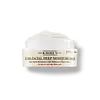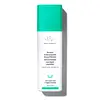What's inside
What's inside
 Key Ingredients
Key Ingredients

 Benefits
Benefits

 Concerns
Concerns

 Ingredients Side-by-side
Ingredients Side-by-side

Water
Skin ConditioningGlycerin
HumectantButyrospermum Parkii Butter
Skin ConditioningGlyceryl Stearate
EmollientEthylhexyl Palmitate
EmollientSqualane
EmollientCetyl Alcohol
EmollientTheobroma Cacao Seed Butter
EmollientMannose
HumectantPEG-100 Stearate
Copernicia Cerifera Wax
Phenoxyethanol
PreservativeCaprylyl Glycol
EmollientSorbic Acid
PreservativeTocopherol
AntioxidantSodium Polyacrylate
AbsorbentLeontopodium Alpinum Extract
Skin ConditioningSodium Hydroxide
BufferingStearyl Alcohol
EmollientCeramide NP
Skin ConditioningMyristyl Alcohol
EmollientAdenosine
Skin ConditioningCapryloyl Salicylic Acid
ExfoliatingPseudoalteromonas Ferment Extract
HumectantLavandula Angustifolia Oil
MaskingLinalool
PerfumingWater, Glycerin, Butyrospermum Parkii Butter, Glyceryl Stearate, Ethylhexyl Palmitate, Squalane, Cetyl Alcohol, Theobroma Cacao Seed Butter, Mannose, PEG-100 Stearate, Copernicia Cerifera Wax, Phenoxyethanol, Caprylyl Glycol, Sorbic Acid, Tocopherol, Sodium Polyacrylate, Leontopodium Alpinum Extract, Sodium Hydroxide, Stearyl Alcohol, Ceramide NP, Myristyl Alcohol, Adenosine, Capryloyl Salicylic Acid, Pseudoalteromonas Ferment Extract, Lavandula Angustifolia Oil, Linalool
Water
Skin ConditioningGlycerin
HumectantLactic Acid
BufferingDicaprylyl Carbonate
EmollientSqualane
EmollientSodium Hydroxide
BufferingGlycine Max Seed Extract
Skin ConditioningSclerocarya Birrea Seed Oil
HumectantCamellia Sinensis Seed Oil
HumectantSodium PCA
HumectantCaprylic/Capric Triglyceride
MaskingBorago Officinalis Seed Oil
EmollientTremella Fuciformis Polysaccharide
Emulsion StabilisingTocotrienols
Skin ConditioningSh-Oligopeptide-1
Skin ConditioningSh-Oligopeptide-2
Skin ConditioningSh-Polypeptide-1
Skin ConditioningSh-Polypeptide-9
Skin ConditioningSh-Polypeptide-11
Copper Palmitoyl Heptapeptide-14
Skin ConditioningHeptapeptide-15 Palmitate
Skin ConditioningPalmitoyl Tetrapeptide-7
Skin ConditioningPalmitoyl Tripeptide-1
Skin ConditioningPalmitoyl Tripeptide-38
Skin ConditioningPalmitoyl Hexapeptide-12
Skin ConditioningTripeptide-1
Skin ConditioningPyrus Malus Fruit Extract
Skin ConditioningPropanediol
SolventSodium Hyaluronate
HumectantPanthenol
Skin ConditioningSodium Hyaluronate Crosspolymer
HumectantSodium Lactate
BufferingPCA
HumectantAlanine
MaskingArginine
MaskingGlycine
BufferingHistidine
HumectantIsoleucine
Skin ConditioningPhenylalanine
MaskingProline
Skin ConditioningSerine
MaskingThreonine
Valine
MaskingAdenosine
Skin ConditioningNymphaea Alba Root Extract
Skin ConditioningBacillus/Folic Acid Ferment Filtrate Extract
AntioxidantSymphytum Officinale Callus Culture Extract
Skin ConditioningDextran
Oryza Sativa Bran Oil
EmollientLinoleic Acid
CleansingLinolenic Acid
CleansingButylene Glycol
HumectantAcetyl Glutamine
Skin ConditioningCoconut Alkanes
EmollientCoco-Caprylate/Caprate
EmollientPentylene Glycol
Skin ConditioningIsomalt
HumectantLecithin
EmollientXanthan Gum
EmulsifyingAspartic Acid
MaskingPhytosphingosine
Skin ConditioningPhospholipids
Skin ConditioningGlycine Soja Sterols
EmollientTocopherol
AntioxidantCitric Acid
BufferingLactic Acid/Glycolic Acid Copolymer
Skin ConditioningPolyvinyl Alcohol
Phenoxyethanol
PreservativeSodium Benzoate
MaskingHydroxypropyl Cyclodextrin
MaskingPolysorbate 20
EmulsifyingCaprylyl Glycol
EmollientPhenylpropanol
MaskingChlorphenesin
AntimicrobialCarbomer
Emulsion StabilisingGlyceryl Caprylate
EmollientEthylhexylglycerin
Skin ConditioningWater, Glycerin, Lactic Acid, Dicaprylyl Carbonate, Squalane, Sodium Hydroxide, Glycine Max Seed Extract, Sclerocarya Birrea Seed Oil, Camellia Sinensis Seed Oil, Sodium PCA, Caprylic/Capric Triglyceride, Borago Officinalis Seed Oil, Tremella Fuciformis Polysaccharide, Tocotrienols, Sh-Oligopeptide-1, Sh-Oligopeptide-2, Sh-Polypeptide-1, Sh-Polypeptide-9, Sh-Polypeptide-11, Copper Palmitoyl Heptapeptide-14, Heptapeptide-15 Palmitate, Palmitoyl Tetrapeptide-7, Palmitoyl Tripeptide-1, Palmitoyl Tripeptide-38, Palmitoyl Hexapeptide-12, Tripeptide-1, Pyrus Malus Fruit Extract, Propanediol, Sodium Hyaluronate, Panthenol, Sodium Hyaluronate Crosspolymer, Sodium Lactate, PCA, Alanine, Arginine, Glycine, Histidine, Isoleucine, Phenylalanine, Proline, Serine, Threonine, Valine, Adenosine, Nymphaea Alba Root Extract, Bacillus/Folic Acid Ferment Filtrate Extract, Symphytum Officinale Callus Culture Extract, Dextran, Oryza Sativa Bran Oil, Linoleic Acid, Linolenic Acid, Butylene Glycol, Acetyl Glutamine, Coconut Alkanes, Coco-Caprylate/Caprate, Pentylene Glycol, Isomalt, Lecithin, Xanthan Gum, Aspartic Acid, Phytosphingosine, Phospholipids, Glycine Soja Sterols, Tocopherol, Citric Acid, Lactic Acid/Glycolic Acid Copolymer, Polyvinyl Alcohol, Phenoxyethanol, Sodium Benzoate, Hydroxypropyl Cyclodextrin, Polysorbate 20, Caprylyl Glycol, Phenylpropanol, Chlorphenesin, Carbomer, Glyceryl Caprylate, Ethylhexylglycerin
Ingredients Explained
These ingredients are found in both products.
Ingredients higher up in an ingredient list are typically present in a larger amount.
Adenosine is in every living organism. It is one of four components in nucleic acids that helps store our DNA.
Adenosine has many benefits when used. These benefits include hydrating the skin, smoothing skin, and reducing wrinkles. Once applied, adenosine increases collagen production. It also helps with improving firmness and tissue repair.
Studies have found adenosine may also help with wound healing.
In skincare products, Adenosine is usually derived from yeast.
Learn more about AdenosineCaprylyl Glycol is a humectant and emollient, meaning it attracts and preserves moisture.
It is a common ingredient in many products, especially those designed to hydrate skin. The primary benefits are retaining moisture, skin softening, and promoting a healthy skin barrier.
Though Caprylyl Glycol is an alcohol derived from fatty acids, it is not the kind that can dry out skin.
This ingredient is also used as a preservative to extend the life of products. It has slight antimicrobial properties.
Learn more about Caprylyl GlycolGlycerin is already naturally found in your skin. It helps moisturize and protect your skin.
A study from 2016 found glycerin to be more effective as a humectant than AHAs and hyaluronic acid.
As a humectant, it helps the skin stay hydrated by pulling moisture to your skin. The low molecular weight of glycerin allows it to pull moisture into the deeper layers of your skin.
Hydrated skin improves your skin barrier; Your skin barrier helps protect against irritants and bacteria.
Glycerin has also been found to have antimicrobial and antiviral properties. Due to these properties, glycerin is often used in wound and burn treatments.
In cosmetics, glycerin is usually derived from plants such as soybean or palm. However, it can also be sourced from animals, such as tallow or animal fat.
This ingredient is organic, colorless, odorless, and non-toxic.
Glycerin is the name for this ingredient in American English. British English uses Glycerol/Glycerine.
Learn more about GlycerinPhenoxyethanol is a preservative that has germicide, antimicrobial, and aromatic properties. Studies show that phenoxyethanol can prevent microbial growth. By itself, it has a scent that is similar to that of a rose.
It's often used in formulations along with Caprylyl Glycol to preserve the shelf life of products.
Sodium Hydroxide is also known as lye or caustic soda. It is used to adjust the pH of products; many ingredients require a specific pH to be effective.
In small amounts, sodium hydroxide is considered safe to use. However, large amounts may cause chemical burns due to its high alkaline.
Your skin has a natural pH and acid mantle. This acid mantle helps prevent harmful bacteria from breaking through. The acid mantle also helps keep your skin hydrated.
"Alkaline" refers to a high pH level. A low pH level would be considered acidic.
Learn more about Sodium HydroxideSqualane is an emollient that helps the skin hold onto moisture. It's an oily liquid that occurs naturally in certain types of fish and plant oils.
Because squalane boosts hydration in the skin, it also comes with plenty of benefits: it is an antioxidant and can help fight free radicals and skin damage. Squalane is also found to have a detoxifying effect when applied.
Squalane comes from squalene, which occurs naturally within the sebum of our skin. It is one of the oils our skin produces to keep itself hydrated. Squalane is the hydrogenated version of squalene and has a longer shelf life.
Research shows that squalane is non-irritating (even at 100% concentration).
In general, it's a fantastic ingredient. It does a great job at hydrating the skin, and it's suitable for those with sensitive skin.
The source of squalane may impact malassezia / fungal acne. This is because olive oil derived squalane can contain impurities such as fatty acids and plant waxes. Sugarcane derived squalane is recommended for anyone with malassezia concerns.
Is squalane vegan?
This depends on the source. Squalane can be derived from both plants and animals. Most squalane used in skincare comes from plants.
Please note: the source of squalane is only known if disclosed by the brand. We recommend reaching out to the brand if you have any questions about their squalane.
Read more about squalene with an "e".
Is squalane an oil?
Squalane is often called an oil, but it’s technically not; it’s a hydrocarbon, meaning it’s only made of carbon and hydrogen, unlike true oils which are triglycerides made of fatty acids and glycerol.
The term “oil-free” isn’t regulated, so companies can define it however they want. Some exclude all oils, while others just avoid mineral oil or comedogenic oils.
While some people avoid oils thinking they cause breakouts, the right kind of oil (or oil-like ingredient like squalane) can actually help balance and hydrate your skin. It’s worth testing out simple oils or squalane to see what works best for your skin.
Learn more about SqualaneTocopherol (also known as Vitamin E) is a common antioxidant used to help protect the skin from free-radicals and strengthen the skin barrier. It's also fat soluble - this means our skin is great at absorbing it.
Vitamin E also helps keep your natural skin lipids healthy. Your lipid skin barrier naturally consists of lipids, ceramides, and fatty acids. Vitamin E offers extra protection for your skin’s lipid barrier, keeping your skin healthy and nourished.
Another benefit is a bit of UV protection. Vitamin E helps reduce the damage caused by UVB rays. (It should not replace your sunscreen). Combining it with Vitamin C can decrease sunburned cells and hyperpigmentation after UV exposure.
You might have noticed Vitamin E + C often paired together. This is because it is great at stabilizing Vitamin C. Using the two together helps increase the effectiveness of both ingredients.
There are often claims that Vitamin E can reduce/prevent scarring, but these claims haven't been confirmed by scientific research.
Learn more about TocopherolWater. It's the most common cosmetic ingredient of all. You'll usually see it at the top of ingredient lists, meaning that it makes up the largest part of the product.
So why is it so popular? Water most often acts as a solvent - this means that it helps dissolve other ingredients into the formulation.
You'll also recognize water as that liquid we all need to stay alive. If you see this, drink a glass of water. Stay hydrated!
Learn more about Water